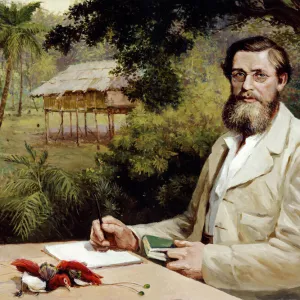Home > Europe > Germany > Related Images
Siphonophorae hydrozoa: Porpema prunella and Porpita species
![]()

Wall Art and Photo Gifts from Mary Evans Picture Library
Siphonophorae hydrozoa: Porpema prunella and Porpita species
Siphonophorae hydrozoa: Porpema prunella and Porpita species, young and adult colonies, gas bladder, etc. Chromolithograph by Adolf Glitsch from an illustration by Ernst Haeckel from Art Forms in Nature, Kunstformen der Natur, Liepzig, Germany, 1904
Mary Evans Picture Library makes available wonderful images created for people to enjoy over the centuries
Media ID 23180518
© Florilegius/Mary Evans
Adolf Adult Bladder Colony Ernst Forms Glitsch Haeckel Hydrozoa Kunstformen Medusa Prunella Siphonophorae Species Porpita
FEATURES IN THESE COLLECTIONS
> Europe
> Germany
> Related Images
> Mary Evans Prints Online
> New Images August 2021
Siphonophorae - Porpema prunella and Porpita Species
EDITORS COMMENTS
is a stunning chromolithograph print showcasing the intricate beauty of two distinct Siphonophorae hydrozoan species, Porpema prunella and Porpita. This exquisite artwork, created by Adolf Glitsch based on an illustration by Ernst Haeckel, is a captivating representation of the complex structures and unique features of these marine organisms. The image features both young and adult colonies of these hydrozoans, with their characteristic umbrella-shaped medusae suspended in the water by long, trailing tentacles. The Porpema prunella medusa displays a distinct, dark disc in the center, surrounded by a ring of palisade cells, while the Porpita species shows a more translucent, bell-shaped medusa with a prominent gas bladder. The intricacy of their structures is further highlighted in the detail of their gastroblasts, which are visible in the lower portion of the image. The gastroblasts are the reproductive and feeding structures of the hydrozoans, responsible for budding new colonies and capturing prey. This chromolithograph, originally published in Ernst Haeckel's renowned collection "Art Forms in Nature" (Kunstformen der Natur) in 1904, is a testament to the artistic and scientific exploration of the natural world during the late 19th and early 20th centuries. The meticulous attention to detail and vibrant colors bring these fascinating hydrozoan species to life, inviting us to appreciate their beauty and complexity.
MADE IN THE USA
Safe Shipping with 30 Day Money Back Guarantee
FREE PERSONALISATION*
We are proud to offer a range of customisation features including Personalised Captions, Color Filters and Picture Zoom Tools
SECURE PAYMENTS
We happily accept a wide range of payment options so you can pay for the things you need in the way that is most convenient for you
* Options may vary by product and licensing agreement. Zoomed Pictures can be adjusted in the Cart.







